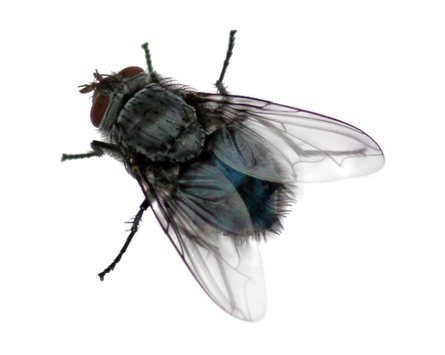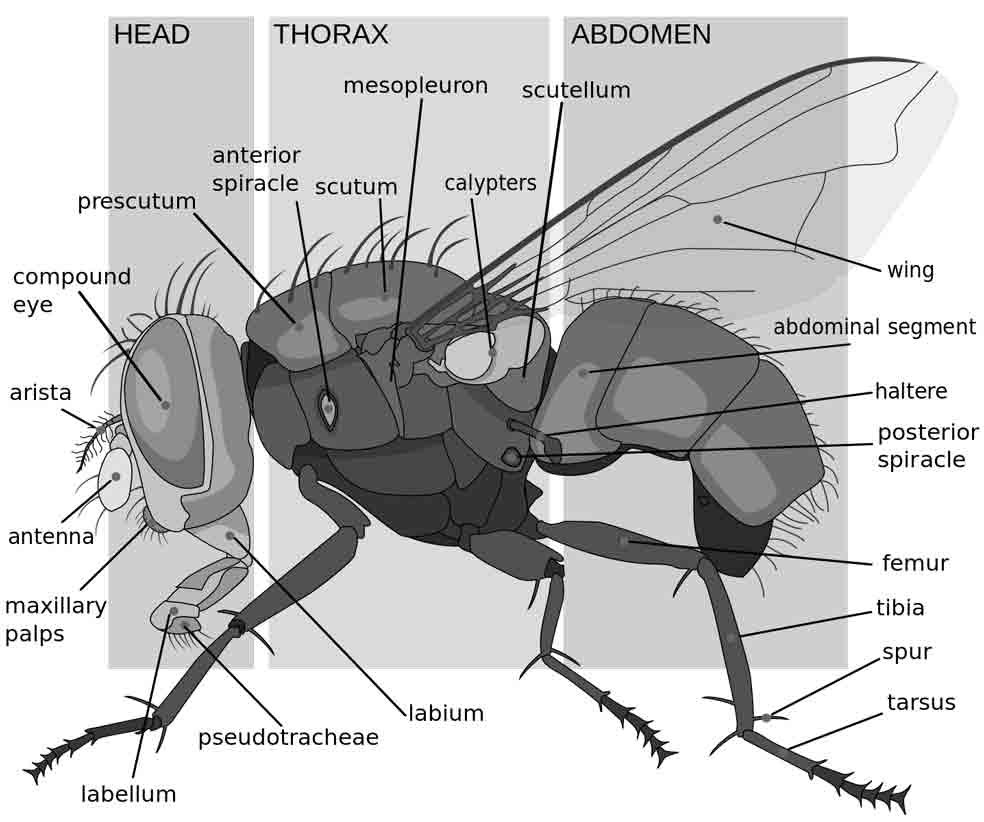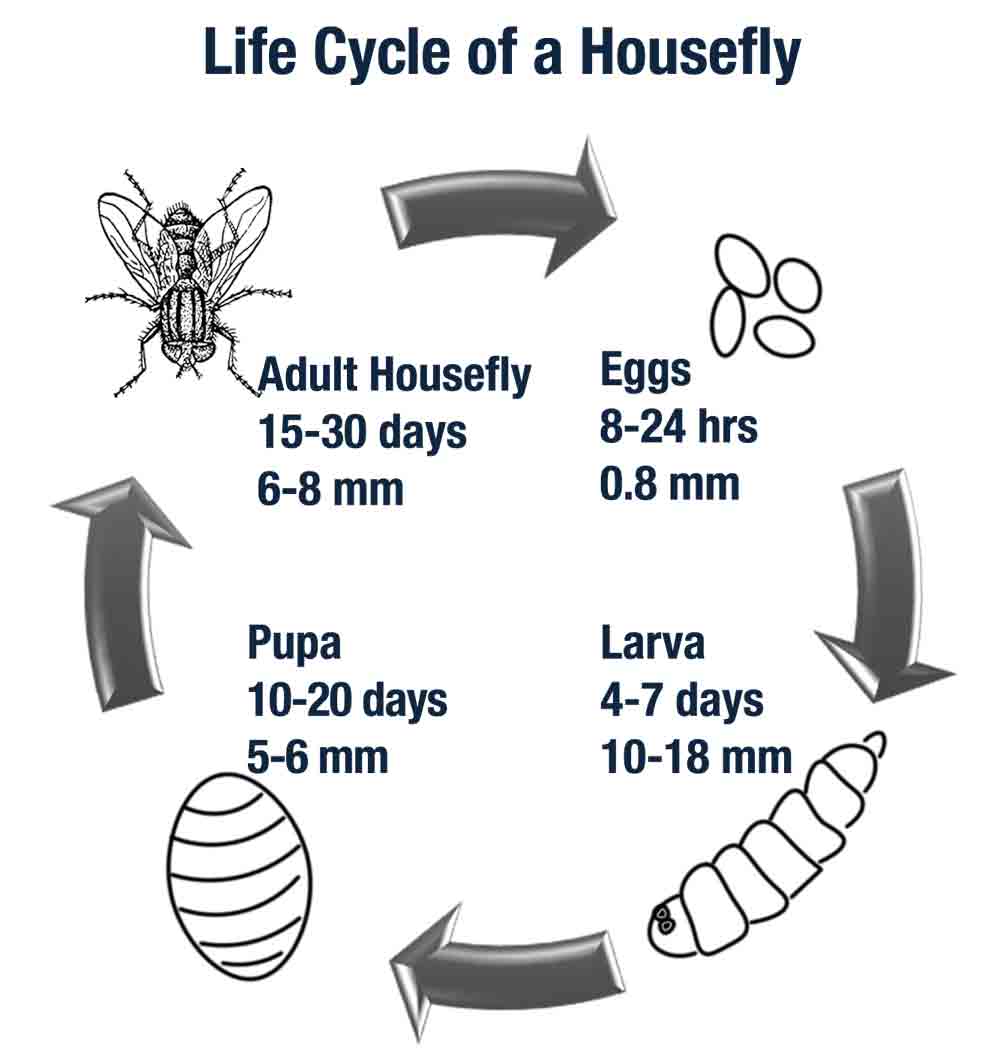In the TIMEFLIES series, by becoming actual flies on the wall, Grizelda, Alisha, and Sam observe their family histories and discover what it is like to live as a housefly.

The idiom, ‘To be a fly on the wall’, refers to being able to
observe a situation closely without interfering or being
noticed. This phrase originated in America in the 1920s
and the first known citation is from 1921.
"I'd just love to be a fly on the wall when the Right
Man comes along."
— THE OAKLAND TRIBUNE, FEBRUARY 1921

Image by Al2 edited by Muhammad Mahdi Karim via Wikimedia Commons GFDL
FLY ANATOMY

A housefly’s life expectancy varies based upon temperature and living conditions.
Flies living in warm environments develop faster and live longer than their counterparts in colder climates.
Houseflies go through four stages: egg, larva, pupa, and adult. Their short life cycle allows them to multiply quickly.

Yes. Not the TIMEFLIES, of course, but the common housefly is known to carry over 100 diseases, including typhoid, tuberculosis, dysentry and cholera.
A serious health hazard, especially in areas with poor sanitary conditions, they transmit diseases by feeding and carrying pathogens. Their pukey eating style, as described in Chapter 7, of TIMEFLIES: The Maiden Voyage, combined with their residence of choice being garbage dumps and raw sewage, means they easily contaminate food with dangerous germs.
